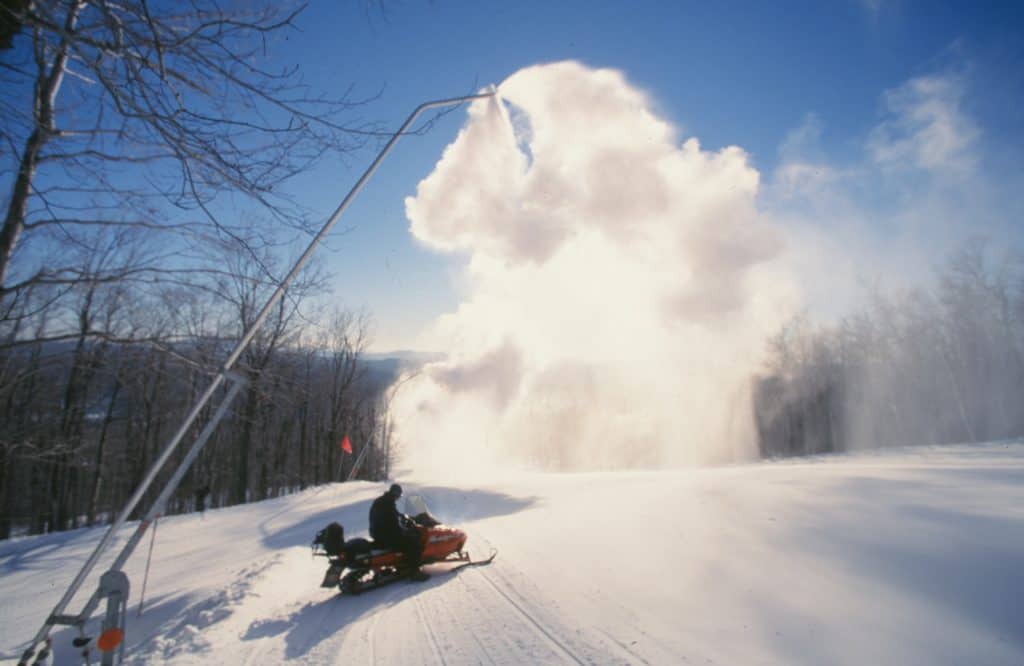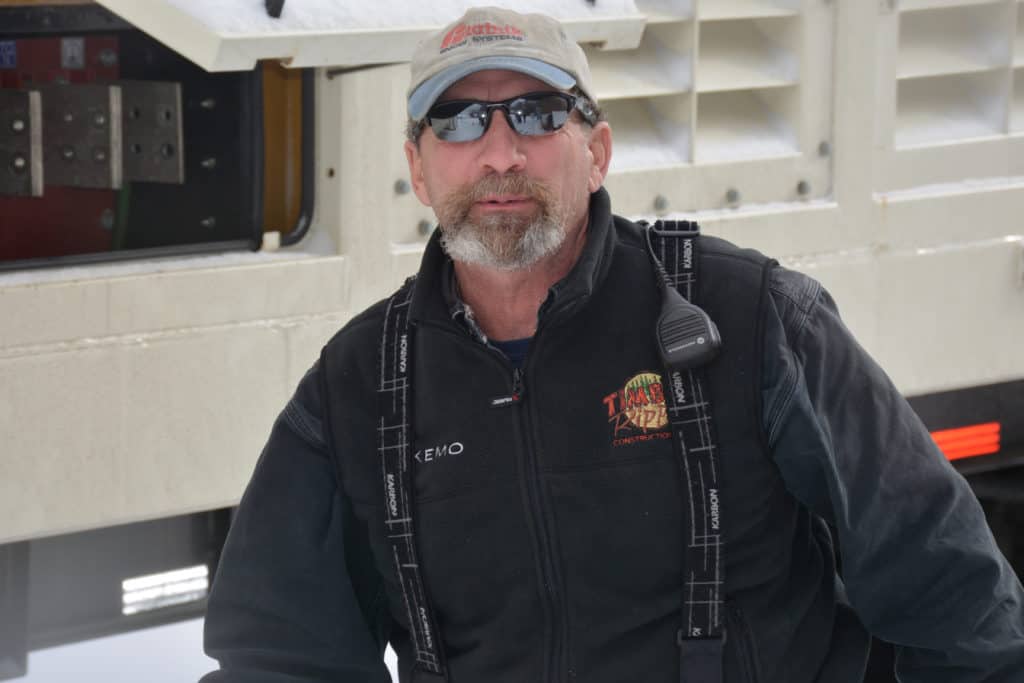
By Karen D. Lorentz
If you’ve ever wondered how Okemo rose to its prominence in the ski industry, a major clue can be found in an observation made by Ray Kennedy some 10 years ago: “We all are part of what gets built – there is loyalty and ownership and a sense of accomplishment and pride.”
Kennedy, who had been hired in 1994 for his construction and heavy equipment experience, first put his expertise to good use in clearing a road and digging test holes for a snowmaking pond and building roads and bridges for the development of Okemo’s Solitude Village. From there he transitioned into snowmaking and overseeing the snowmaking department yearround.
As Okemo expanded, snowmaking was installed on new trails and the mountain’s reputation grew as an area that could be depended upon to have good skiing no matter what the weather did – or didn’t do – thanks to its snowmaking and grooming prowess.
Snowmaking is a challenging blend of art and science and not all ski areas got it right at first. Kennedy notes of Okemo’s success, “Because we built it, we knew it, and there is the advantage of familiarity with the system.”

“Ray makes snowmaking look easy when, in reality, he is always on the go and working 18-hour days to provide the snow and surface that Okemo guests expect and enjoy. He is constantly looking to share his knowledge with our Snowmaking Best Practice Groups and other resort managers, which is so valuable to our company. He is a working manager and is known to spend as many hours on the trails or in the pump stations as his team of snowmakers do,” commented Okemo Mountain Resort Vice-President and General Manager Bruce Schmidt.
A native Vermonter, Kennedy grew up in Bridgewater Corners. After graduating from high school in 1975, he was an 82nd Airborne Paratrooper from 1976-1981. He then served as the road commissioner in Bridgewater, before moving to California to work in construction (1985-1992). He returned to Vermont to help build the U.S. Route 4 Rutland Bypass.
Q&A with Ray Kennedy
Mountain Times (MT): What brought you to Okemo in 1994?
Ray Kennedy (RK): I knew [former] Okemo Mountain Manager Barry Tucker through my dad, who had worked here as a groomer in the 1980s. I was working in Newbury on Route 30 and was looking for something closer to home.
MT: As snowmaking manager, what are your job duties?
RK: I make sure everything is up and running and personnel are hired for winter. We spend all summer preparing the mountain for winter. I spend the summer making sure when I push the button on Nov. 1 the snowmaking system works. Installing new snowmaking pipe is all done in house; most maintenance is done by myself; pumps and motors needing rebuilds are sent out.
MT: What is a typical day like for you in winter?
RK: I rise at 3:30 a.m., make my coffee, sit in my chair and enjoy a cup! Then I call into the base pump station. This lets me know where we are [what the night snowmaking crew has accomplished] and what to expect and how my day will start. I do a daily snowmaking report and get with the mountain manager to see what his needs are. A snowmaking trail check tells me if it is time to move on to new terrain and if there are any gaps. I run through all the pump houses and fix anything that needs adjusting; meet with crews at shift change to see how everyone is; and come up with a plan for the next 24 hours. Then I run through everything one more time. If no problems, I check the pump houses on my way out anywhere between 6 and 8 p.m. and hope for no callbacks to work before morning.
MT: What are the greatest changes you’ve seen in snowmaking?
RK: It would have to be Low-E guns. There were major changes from the traditional water-and-air snowguns to the new tower guns, which reduced the labor burden. Also, when the higher energy costs hit, the mountain moved from using electricity to renting diesel compressors to pump water. But the biggest change was the energy-efficient HKD snowguns and a constant progression of our knowledge in how to use them.
MT: How many snowmakers do you have in your crew and how many shifts are there?
RK: We run two shifts noon to midnight and midnight to noon. We try to have a crew of 20 in all.
MT: What’s in your snowgun arsenal these days? Are there different guns for different purposes?
RK: Yes, there are different guns for different needs, but for the most part we use HKD Low-E tower guns. Most of what we use are the 30-foot towers, and we have 20-foot towers that we move around for narrower trails. We still use the old ground guns when needed.
MT: Is the weather the greatest challenge? What about climate change?
RK: Weather has always been the greatest test of our ability! Climate? It seems to be warmer.
MT: Are there other challenges like costs of energy, the push to get open for the season, or Covid-19 and how do you deal with them?
RK: We expect to be pushed, more so in a year like this! Covid? What can I say? We’re working through it, crews are doing all they can and staying positive.

MT: Any winter stand out in your memory for being the toughest season?
RK: I believe the 2020-2021 season is going into my book as the most difficult season ever.
MT: For you personally what are the best parts to your job?
RK: The challenges and the men and women who work snowmaking, and the sunrises.
MT: Any influences or mentors? Experiences that were particularly significant for you?
RK: Yes, my mentor would have to be Barry Tucker and his no-challenge-too-great attitude. My time in the military had the greatest influence on me. I carry that with me to this day.
MT: Any hobbies?
RK: It may sound strange, working is my hobby but I do have a few old cars I enjoy working on, too.
MT: Any advice for someone thinking of becoming a snowmaker?
RK: Be willing to work hard and have your coworkers’ backs. If you do that, you will have lifelong friends.
MT: Any words of wisdom?
RK: Yesterday is history, tomorrow is a mystery.
MT: Anything you would like to share?
RK: Thank a snowmaker!




